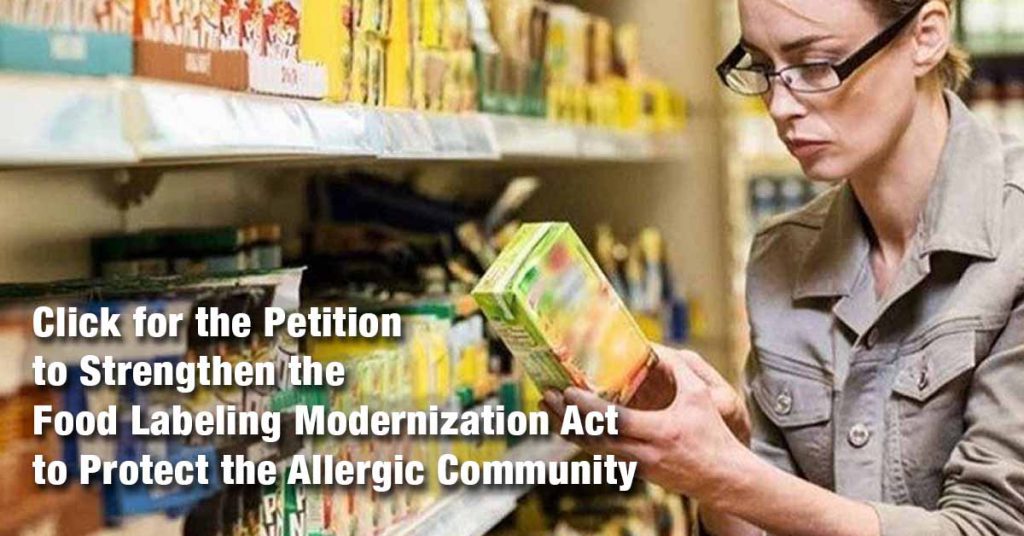So here’s a common, real-life scenario: you have a food allergy where ingesting even a trace of your allergen can send you spiraling into anaphylaxis, a life-threatening reaction that requires immediate injection of epinephrine and a trip to the ER.
If your allergen is one of the “Top 8” as determined by the FDA, you can decode the label to see if your allergen is an ingredient. That’s one problem with labeling that befuddles the allergic community: there are multiple ways for the manufacturer to warn you about allergenic ingredients.
If your allergen is not one of the Top 8, you may be out of luck because your allergen may be hidden in the ingredient list as “spices”, “natural flavors” or some other designation. That’s another problem people with food allergies deal with on a daily basis.
Even if your allergen falls in the Top 9, your work is not done. You need to check to see if your allergen is processed in the same manufacturing line or facility so you can gauge the possibility of allergen cross-contact.
Cross-contact is where an allergen is unknowingly introduced into food when it comes in contact with a surface containing residue of the allergen. This can happen when equipment is not adequately sanitized, one ingredient is mistaken for another, a worker has dust from one product on his hands while tending to another, or a host of other causes.
The FDA issues recalls of food products due to undeclared allergens on a weekly basis, so cross-contact occurs much more frequently than you might expect. And a recall can occur months after the tainted product is on store shelves if it is ever discovered at all.
How do you reliably determine whether a product is made in a facility where your allergen is processed? You can’t, and that’s yet another problem: Precautionary Allergen Labeling (PAL) warnings like “may contain soy” and “manufactured in a facility that also processes tree nuts” are not required by the FDA and their use is entirely voluntary and left to the discretion of the manufacturer.
Some companies include them, some don’t, and some will warn for one allergen under certain circumstances and not for another. [For an explanation of how companies decide whether to include PAL statements, see “When a Manufacturer Says ‘Trust Us’ Regarding Allergens”.]
That leaves you with a choice: call the manufacturer to ask them direct questions about their manufacturing procedures, or put your hope in the odds and play Russian Roulette.
But there’s no reason finding safe products should be this hard for the growing community of people with food allergies and intolerances. All that needs to be done is to fix the label. Doing so will not raise the costs of food but will require updating current labeling regulations that were put in place 18 years ago.
Now is the time to act. The Food Label Modernization Act of 2021 has been introduced in Congress, and despite its name, it does NOTHING to address these issues. We need action NOW or wait years until the next opportunity.
Please read and sign this petition, but don’t stop there! Share it with family, friends, and colleagues; post it on your Facebook, Instagram, LinkedIn, Twitter, reddit, and TikTok profiles; and let your representatives know this is important to you and the wellbeing of your family.
Once we reach a sufficient number of signatures, we’ll issue a press release calling on legislators to take action on our behalf.
Add your name to the 9,000+ people who have already signed and be part of the solution!






